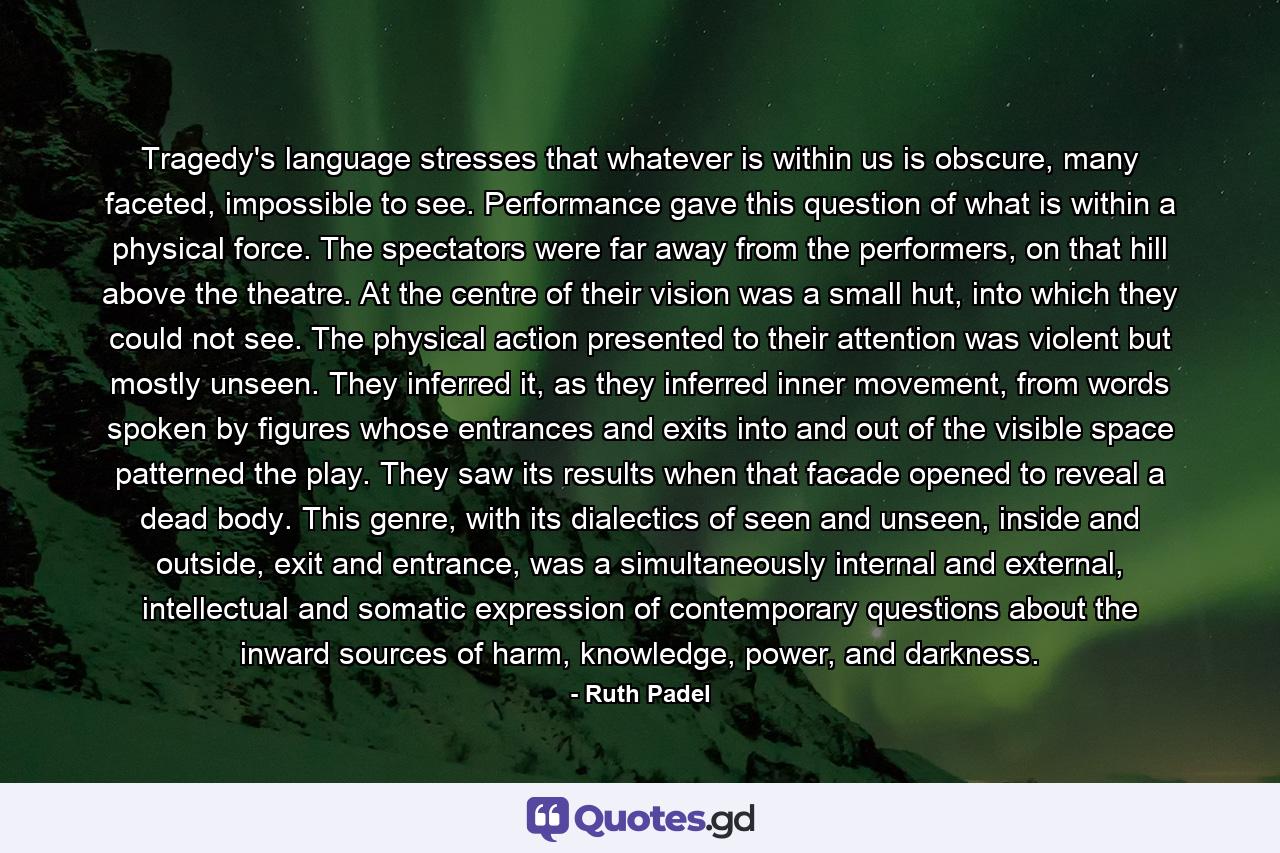Tragedy’s language stresses that whatever is within us is obscure, many faceted, impossible to see. Performance gave this question of what is within a physical force. The spectators were far away from the performers, on that hill above the theatre. At the centre of their vision was a small hut, into which they could not see. The physical action presented to their attention was violent but mostly unseen. They inferred it, as they inferred inner movement, from words spoken by figures whose entrances and exits into and out of the visible space patterned the play. They saw its results when that facade opened to reveal a dead body. This genre, with its dialectics of seen and unseen, inside and outside, exit and entrance, was a simultaneously internal and external, intellectual and somatic expression of contemporary questions about the inward sources of harm, knowledge, power, and darkness.
